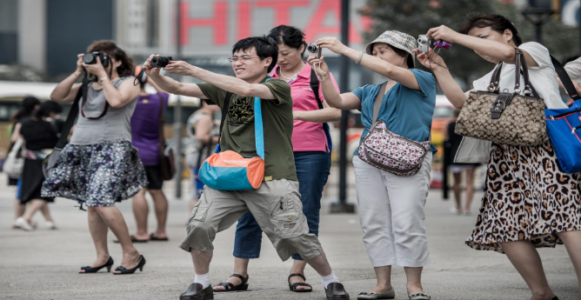A surge in travel bookings and spending signals recovery in Southeast Asia’s tourism sector.
BEIJING: Chinese travelers have made a significant return to Southeast Asia, flocking to popular destinations such as Singapore, Thailand, and Malaysia during the Chinese New Year break. Visitor numbers and spending across these regions have surpassed pre-COVID-19 levels, signaling a robust recovery in international travel after Beijing lifted its strict COVID-19 restrictions in early 2023.
The easing of travel barriers, including visa-free access for Chinese tourists to Southeast Asia, has been a key factor in the resurgence. This bounce-back in tourism has provided a welcome boost for countries in the region that rely heavily on Chinese tourism for economic growth. However, there are concerns over the long-term stability of this recovery, with the mainland economy facing challenges and consumer spending tightening due to volatile financial markets.
“Despite macroeconomic headwinds, we believe Chinese citizens are still willing to spend on travel-related experiences,” HSBC said in a research note. “We think travel-related spending could continue to outpace overall domestic consumption.”
From February 10 to February 17, bookings to Singapore, Thailand, and Malaysia saw a combined increase of more than 30 percent compared to the same period in 2019, according to travel website operator Trip.com. Chinese visitors to Hong Kong, Macau, Japan, and South Korea also rose.
The extended eight-day holiday in 2024, one day longer than the previous Chinese New Year break in 2019, resulted in a substantial uptick in hotel bookings. In Bangkok, bookings tripled over the period from February 10 to February 13 compared to the previous year, while Singapore saw a nine-fold increase in bookings, according to LY.com.
Spending in Singapore, Thailand, and Malaysia via the Alipay platform also surged, rising by 7.5 percent compared to 2019 levels and nearly seven times higher than last year. Despite this, overall consumer spending remained at 82 percent of pre-pandemic levels.
As Chinese tourists explore new destinations, the Middle East emerged as a popular choice, with travel to Saudi Arabia rising more than nine-fold from 2019 and bookings to the United Arab Emirates climbing by 60 percent, Trip.com reported. Meanwhile, Macau, the only location in China where citizens can legally gamble, experienced a significant spike in tourist numbers, with over a million visitors during the holiday and hotel occupancy rates reaching 95 percent.
The boost in Chinese tourism has also positively impacted the gaming industry in Macau. JP Morgan forecasts that daily gross gaming revenues during the peak of the holiday reached US$124 million, surpassing the previous high of US$112 million during the October 2023 Golden Week. February’s gross gaming revenues are expected to rise by at least 80 percent year-on-year, totaling US$2.36 billion, the highest in over four years.
In Hong Kong, more than 1.2 million Chinese tourists visited the city during Chinese New Year, contributing to a 90 percent hotel occupancy rate. The city also saw an influx of 1,980 group tours from mainland China.
In Japan, department store operator Isetan Mitsukoshi Holdings reported significant growth in duty-free sales through February 14, partly driven by Chinese New Year travel. A shift in holiday preferences was evident as more Chinese tourists sought experiential travel, with spending on food and beverages globally up by 70 percent compared to pre-pandemic levels. Overseas car rentals and scenic experiences also saw significant increases, with car rentals up 53 percent and scenic experience bookings soaring more than 130 percent.
As travel recovers, it’s clear that Chinese tourists are contributing significantly to Southeast Asia’s rebound, providing much-needed support to the region’s tourism sector.








